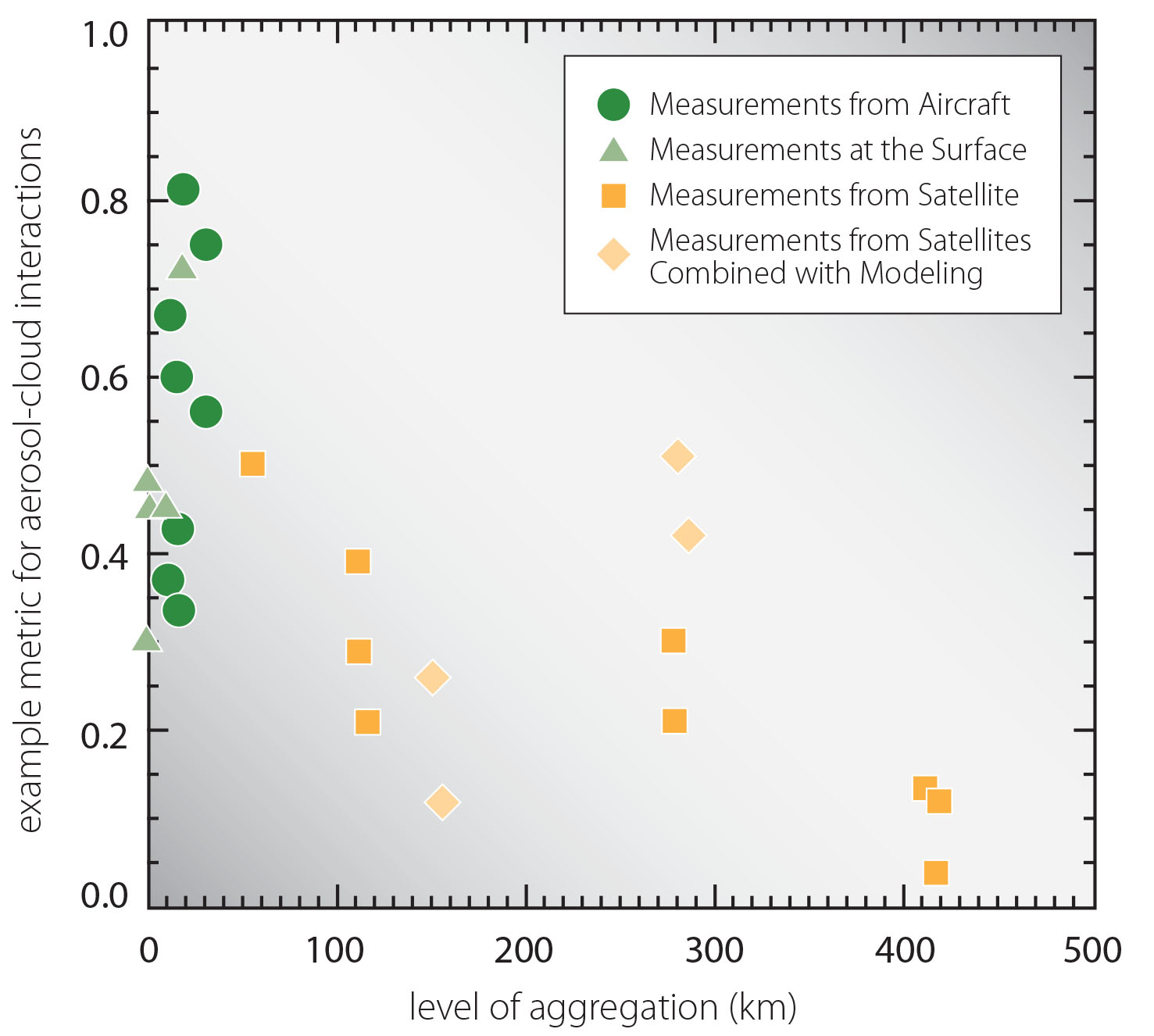Scale Shows True Weight of Aerosol Effects on Clouds
Submitter:
McComiskey, Allison C. — Brookhaven National Laboratory
Area of research:
Aerosol Processes
Journal Reference:
Science
Aerosols—tiny airborne particles from sources like pollution or desert dust—can increase the brightness of clouds, changing how much of the sun’s energy is reflected or radiated back to space compared to how much is trapped in the atmosphere. Some current climate change estimates are based on models that combine or aggregate aerosol and cloud observations in such a way as to lose important details contained in the observations. Now, researchers have demonstrated that such aggregated data result in computed values, or metrics, of aerosol-cloud interactions that are very different than those derived from disaggregated data. Comparisons of metrics from the two types of data yield a range of values that are often treated as equivalent when, in fact, they may have physically different interpretations.
Disaggregated data represent very specific processes on the fairly small scale of cloud drop formation, while aggregated data represent the full range of processes and feedbacks associated with larger-scale aerosol, cloud, and meteorological conditions. Using this range of metrics in climate models is responsible, in part, for the large uncertainty associated with the impacts of aerosol-cloud interactions on Earth’s energy balance. The current research sheds light on oversimplification in the existing range of published metrics and raises the question as to what the range of metrics actually represents.
Impact
Based on an understanding of biases revealed in this study, the authors have proposed approaches that combine distributions of small-scale observations, which retain variance in the measured property, with process-scale models. Such approaches include combining multiple available passive and active satellite-based sensors with airborne and ground-based measurements, process-scale modeling, and extrapolating results using disaggregated data. These approaches will lead to more appropriate use of observations in models of future climate, improving the models’ accuracy.
Summary
To explore the causal relationship between aerosol and cloud properties, the researchers used satellite-based data; ground-based data from the ARM Mobile Facility deployment at Pt. Reyes, California; and output from the Weather and Research Forecasting model. As observations became more aggregated, the original range of values was reduced, and the relationship between the aerosol and cloud properties changed. At the fine scale, the specific causal changes were easier to isolate (change x in aerosol equals change y in cloud). However, these causal changes become obscured by many other processes operating at the aggregated scale.


